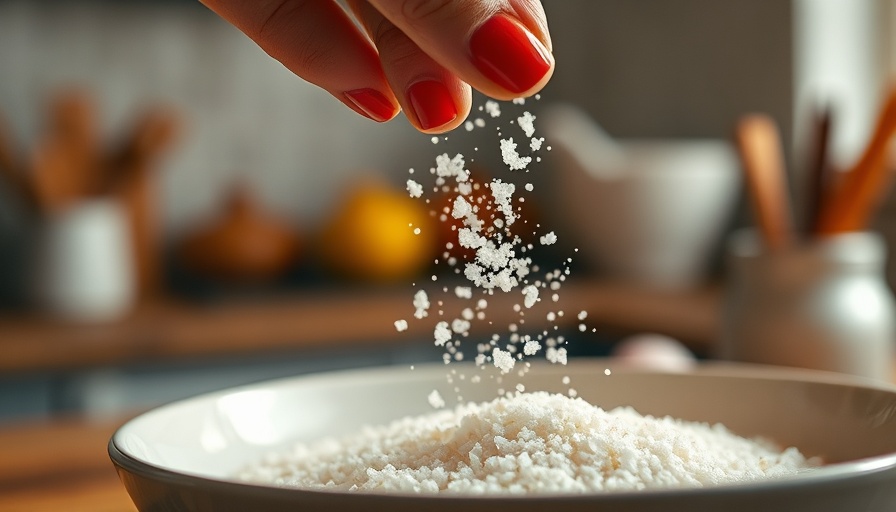
The World Health Organization Takes a Stand on Salt Consumption
This week, the World Health Organization (WHO) has set the stage for a significant dietary shift by recommending that individuals replace traditional table salt with healthier salt alternatives. This recommendation arises from an alarming recognition: our current sodium intake is dangerously high, and it poses serious health risks.
Understanding Sodium and Its Impact on Health
Excess sodium, primarily derived from common table salt, is linked to rising rates of high blood pressure, which affects about one in three adults in Australia alone. The repercussions of hypertension are grave, leading to complications such as heart disease, stroke, and kidney failure. Alarmingly, the WHO attributes approximately 1.9 million deaths globally each year to excessive sodium consumption. Currently, individuals consume an average of 4.3g of sodium per day, far exceeding the recommended limit of 2g. This excess is a significant public health concern, prompting the WHO to advocate for substantial changes in our dietary habits.
Dispelling Myths Surrounding Salt Reduction
Many individuals resist lower sodium diets due to the perception that reducing salt equates to compromising flavor. Yet, this perception misses the mark; the benefits of reducing sodium consumption often outweigh the temporary loss of savory taste. Moreover, the food industry has been slow to innovate towards lower-sodium options, leaving consumers struggling to adjust their palates and cooking practices effectively.
Potassium-Enriched Salt: A Healthier Alternative
In response to these challenges, the WHO has introduced potassium-enriched salt as a viable alternative. This innovative salt blends sodium chloride with potassium chloride, delivering the essential mineral potassium while reducing sodium content. Potassium plays a pivotal role in human health, with a recommended intake of 3.5g per day, yet many people fall short of this goal.
Broadening Horizons: The Health Advantages of Switching
Research has shown that adopting potassium-enriched salt can significantly cut the risk of heart disease and stroke. Large trials have demonstrated that this switch may not only lower blood pressure but also enhance overall health, providing a simple yet powerful strategy for improving dietary habits. Beyond reducing sodium intake, this switch promotes potassium levels, helping to offset the deficiency many individuals experience.
Visualizing the Impact: Projected Health Outcomes
Studies model outcomes if populations embrace potassium-enriched salt. The projections are staggering—a potential reduction in widespread cardiovascular risks could prevent hundreds of thousands of premature deaths from heart attacks and strokes, emphasizing the essential nature of this dietary transition.
Practical Considerations for Integrative Health Practitioners
As wellness practitioners, it is vital to equip clients with the knowledge and tools to implement this switch. Encourage dietary education surrounding the health benefits of potassium-enriched salt and provide practical tips for incorporating it into meal prep. Promote the importance of increasing potassium-rich foods, such as leafy greens, bananas, and legumes, to complement this change.
Concluding Thoughts: A Call for Collective Action
The WHO’s recommendation to switch to healthier salt alternatives is more than just a dietary guideline; it symbolizes a necessary shift towards prioritizing health and well-being. For health practitioners dedicated to promoting holistic wellness, embracing this change can lead to transformative results for clients and communities alike. By advocating for potassium-enriched alternatives, we can collectively work towards reversing the tide of salt-induced health crises.
 Add Row
Add Row  Add
Add 


 Add Row
Add Row 




 Add
Add
Write A Comment